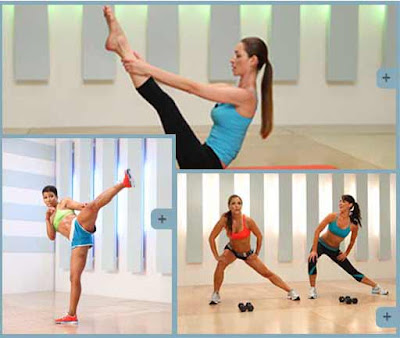Gretchen Reynolds writes in The New York Times how several studies have found growing evidence that ibuprofen and similar anti-inflammatory painkillers taken before a workout do not offer any benefit and may be causing disagreeable physical damage instead.
Many active people use the painkiller ibuprofen on an almost daily basis. In surveys, up to 70 percent of distance runners and other endurance athletes report that they down the pills before every workout or competition, viewing the drug as a pre-emptive strike against muscle soreness.
But a valuable new study joins growing evidence that ibuprofen and similar anti-inflammatory painkillers taken before a workout do not offer any benefit and may be causing disagreeable physical damage instead, particularly to the intestines.
Studies have already shown that strenuous exercise alone commonly results in a small amount of intestinal trauma. A representative experiment published last year found that cyclists who rode hard for an hour immediately developed elevated blood levels of a marker that indicates slight gastrointestinal leakage.
Physiologically, it makes sense that exercise would affect the intestines as it does, because, during prolonged exertion, digestion becomes a luxury, said Dr. Kim van Wijck, currently a surgical resident at Orbis Medical Center in the Netherlands, who led the small study. So the blood that normally would flow to the small intestine is instead diverted to laboring muscles. Starved of blood, some of the cells lining the intestines are traumatized and start to leak.
Thankfully, the damage seems to be short-lived, Dr. van Wijck said. Her research showed that within an hour after a cyclist finished riding, the stressed intestines returned to normal.
But the most common side-effect of ibuprofen is gastrointestinal damage. And because many athletes take the drug for pain before and after a workout, Dr. van Wijck set out to determine the combined effect of exercise and ibuprofen.
For the new study, published in the December issue of Medicine & Science in Sports & Exercise, researchers at Maastricht University in the Netherlands recruited nine healthy, active men and had them visit the university’s human performance lab four times.
During two of the visits, the men rested languorously for an hour, although before one of the visits, they swallowed 400 milligrams of ibuprofen the night before and also the morning of their trip to the lab. (Four hundred milligrams is the recommended nonprescription dosage for adults using the drug to treat headaches or other minor pain.)
During the remaining visits, the men briskly rode stationary bicycles for that same hour. Before one of those rides, though, they again took 400 milligrams of ibuprofen the night before and the morning of their workouts.
At the end of each rest or ride, researchers drew blood to check whether the men’s small intestines were leaking. Dr. van Wijck found that blood levels of a protein indicating intestinal leakage were, in fact, much higher when the men combined bike riding with ibuprofen than during the other experimental conditions when they rode or took ibuprofen alone. Notably, the protein levels remained elevated several hours after exercise and ibuprofen.
The health implications of this finding are not yet clear, although they are worrisome, Dr. van Wijck said. It may be that if someone uses ibuprofen before every exercise session for a year or more, she said, “intestinal integrity might be compromised.” In that case, small amounts of bacteria and digestive enzymes could leak regularly into the bloodstream.
More immediately, if less graphically, the absorption of nutrients could be compromised, especially after exercise, Dr. van Wijck said, which could affect the ability of tired muscles to resupply themselves with fuel and regenerate.
The research looks specifically at prophylactic use of ibuprofen and does not address the risks and benefits of ibuprofen after an injury occurs. Short-term use of ibuprofen for injury is generally considered appropriate.
The Dutch study is not the first to find damage from combining exercise and ibuprofen. Earlier work has shown that frequent use of the drug before and during workouts can also lead to colonic seepage. In a famous study from a few years ago, researchers found that runners at the Western States 100-Mile Endurance Run who were regular ibuprofen users had small amounts of colonic bacteria in their bloodstream.
This bacterial incursion resulted in “higher levels of systemic inflammation,” said David C. Nieman, a professor of health and exercise science at Appalachian State University who conducted the study and is himself an ultramarathoner. In other words, the ultramarathon racers who frequently used ibuprofen, an anti-inflammatory, wound up with higher overall levels of bodily inflammation. They also reported being just as sore after the race as runners who had not taken ibuprofen.
Animal studies have also shown that ibuprofen hampers the ability of muscles to rebuild themselves after exercise. So why do so many athletes continue enthusiastically to swallow large and frequent doses of ibuprofen and related anti-inflammatory painkillers, including aspirin, before and during exercise?
“The idea is just entrenched in the athletic community that ibuprofen will help you to train better and harder,” Dr. Nieman said. “But that belief is simply not true. There is no scientifically valid reason to use ibuprofen before exercise and many reasons to avoid it.”
Dr. van Wijck agrees. “We do not yet know what the long-term consequences are” of regularly mixing exercise and ibuprofen, she said. But it is clear that “ibuprofen consumption by athletes is not harmless and should be strongly discouraged.”
David Wayne Fish is all about proper wellness. Check out this Twitter account for updates on health and exercise.

















